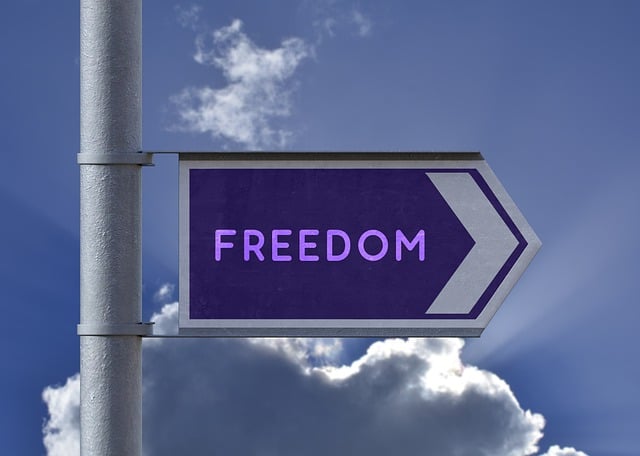Forgiveness is hard to do, whether we are trying to forgive others or ourself. It’s not a one-off event but is an evolving process which is why experts in the area suggest that we start off small – with a minor incident or hurt. Forgiveness engages our feelings as well as our mind and body. It is something that we have to work at consciously if we are to achieve our goal of “letting go”.
Forgiving others
Frank Ostaseski, author of The Five Invitations: Discover What Death Can Teach Us About Living Fully, suggests that one of the lessons from the dying is, “Don’t Wait to Forgive”. In his extensive hospice experience he found that too many people were consumed by anger and rage on their death bed because they were unable to forgive others. He argues that we should not wait until we are dying to forgive others and ourself. Frank maintains that there is a natural resistance to forgiveness because we have a need to maintain our self-image (of goodness/perfection) and find it difficult to acknowledge that we are carrying challenging emotions such as anger, resentment and regret. However, there is a real cost to ourselves and our relationships when we hold onto these emotions.
Danette May in her memoir, The Rise: An Unforgettable Journey of Self-Love, Forgiveness and Transformation, argues that we need to “cut the rope”, or as Frank puts it, “letting go”. These difficult emotions can hold us back, causing self-absorption and “emotional stunting”. There is a real challenge involved in acknowledging our part in an interaction (or multiple interactions) that was hurtful. We need to be able to see things from the other person’s perspective and understand what was driving their behaviour. Frank suggests that in the final analysis, we need to be able to honestly face up to “what we don’t like in ourselves”.
Fred Luskin contends that there are three elements of a grievance that contribute to our “maintaining the rage” and sustaining the hurt:
- Preoccupation with the ”offence” and exaggerating its negative impact on us
- Insisting that others are to blame for our negative/difficult feelings
- Developing and perpetuating a “grievance story”.
Fred argues that the real costs of not letting go are extensive. Not only do we lose our personal power because we are “controlled by emotions”, but also we lose the ability to focus and achieve peace and wellness. If we are consumed by anger, hatred, resentment or envy we can’t see past our hurt and we use all our energy in sharing our story and maintaining our sense of hurt.
Forgiving ourselves
The starting point for self-forgiveness is acknowledging our part in the hurtful interaction. It is incredibly difficult to forgive ourselves for the hurt we cause to others – it can be a lifelong process. Part of the challenge is dealing with strong feelings of guilt and shame – feelings that go against the grain and undermine our sense of who we are. We can blind ourselves to our negative impact on others because it is too hurtful to ourselves to own up to our part in hurtful interactions.
Jack Kornfield in the Power of Awareness Course argues that there are three myths that underpin our reluctance to engage in self-forgiveness:
- Self-forgiveness is a sign of weakness – the reality is that it takes a lot of strength and courage to face up to our hurtful words and actions
- We can forgive ourselves through a “quick fix”, e.g., a short meditation or exercise
- Forgiving ourselves is condoning our hurtful behaviour.
Elisha Goldstein cites Lily Tomlin when discussing forgiveness of others, Forgiveness means giving up all hope for a better past. This insight can as readily apply to self-forgiveness as to forgiving others. In self-forgiveness, we have to give up our “grievance story”, let go of wishing that we had behaved better and dismantle our defenses that prevent us from acknowledging our part in a hurtful interaction.
Mindfulness – a path to forgiveness
When we develop a mindful disposition by observing our inner landscape – our thoughts, emotions and bodily sensations – we can reduce our negative thoughts and increase our ability to forgive. Mindfulness can develop our “disposition to forgive” – it can unearth grievance stories, clarify our part in any interaction, help us to take the other person’s perspective, increase our awareness of negative emotions and related bodily sensations and cultivate compassion. Ultimately mindfulness can help us to develop self-awareness and emotional regulation so that we are not captive to our strong, challenging emotions and can live in the present rather than the hurtful past.
Forgiveness meditation
There are multiple forms of forgiveness meditation. Loving kindness meditation, for example, has been shown to cultivate compassion towards others as well as self-compassion. Sharon Salzberg, experienced mindfulness trainer, offers a three-part forgiveness meditation encompassing:
- Seeking forgiveness from someone you have hurt or harmed
- Offer forgiveness to those who have hurt or harmed you
- Self-forgiveness for the times you have harmed yourself through being judgmental.
Sharon includes an affirmation related to the last point, For all the ways I have hurt or harmed myself, knowingly or unknowingly, I offer forgiveness. Other meditation trainers, such as Mitra Manesh, focus the self-forgiveness on the harm that we have caused to others, rather than to ourself. Mitra, in her forgiveness meditation podcast, places a lot of emphasis on becoming aware of our bodily sensations as we deal with the “heavy energies” involved in holding onto grudges, anger or rage. She also suggests a mantra for seeking forgiveness from others, For all the ways that I have caused you pain and suffering, I ask your forgiveness.
In reflecting on a number of forgiveness meditations, I identified four common principles underpinning the meditation process:
- Stay grounded, relaxed and focused
- Manage distractions through an anchor such as your breath or sounds
- Start small with something that is manageable and recent (limited history or replaying)
- Adopt a healing perspective – show loving kindness to others and yourself.
We can develop a mindful disposition in multiple ways , not just through meditation. As we grow in mindfulness we can more readily adopt the perspective of others and understand their hurt. We can own up to and name our own feelings, however negative or challenging. Over time, our disposition to forgive and our capacity to offer forgiveness to others and ourself will grow almost invisibly.
Reflection
Forgiving ourself can be a lifetime pursuit as I have found in trying to forgive myself for my part in my marriage breakup which occurred more than 40 years ago. This is something I am working towards. I find that forgiving others and forgiving ourself are interwoven activities – not discrete, independent steps.
I have also been reflecting on my long-standing anger towards my Father for his alcoholism and its major impact on my childhood and my family. I recently started crafting a poem called Paternal Forgiveness which I will publish soon in this blog. In the poem, I offer forgiveness to my father, seek to forgive myself for my harsh judgments and express my sorrow for the hurt that I had caused him when he was alive. In writing the poem, I have drawn inspiration from Kim Rosen’s book, Saved by a Poem: The Transformative Power of Words. In the book, Kim describes how poetry has helped people to deal with challenging situations, including the need to forgive others and themselves, and provides insight into the transformative elements of a poem.
____________________________________________
Image by Pete Linforth from Pixabay
By Ron Passfield – Copyright (Creative Commons license, Attribution–Non Commercial–No Derivatives)
Disclosure: If you purchase a product through this site, I may earn a commission which will help to pay for the site and the resources to support the blog.









